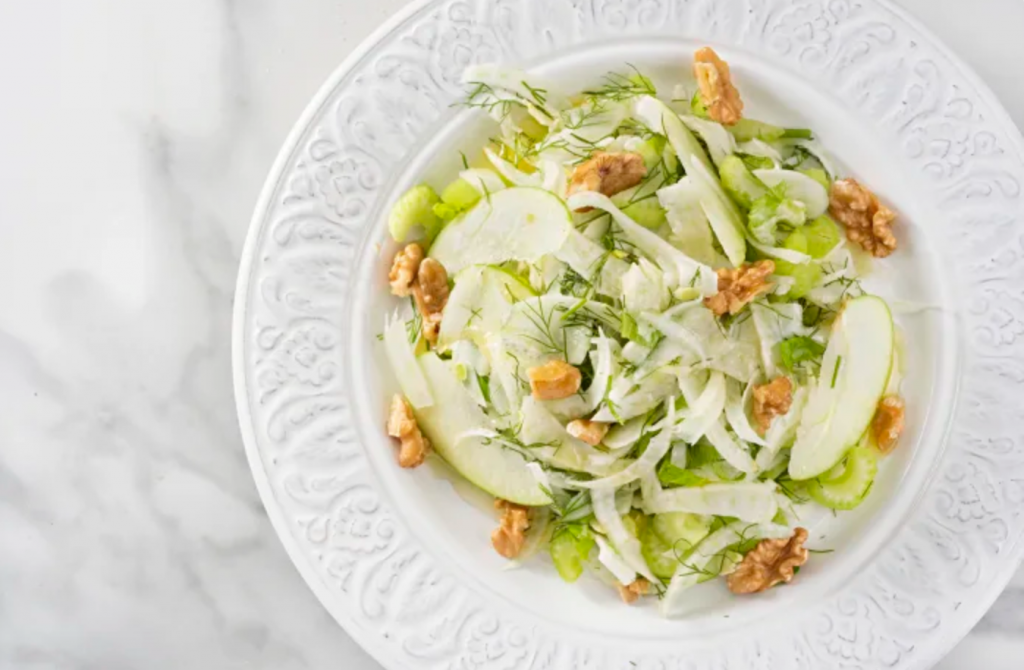The early arrival of all things pumpkin spiced means one thing, and one thing only: Our palates are doomed. (Just kidding… A). The addition of pumpkin spice to lattes, muffins and other products means fall is just around the corner. While I may be a pumpkin spice enthusiast (I wrote the cookbook “Basic Bitchen,” after all), there are plenty of other seasonal vegetables – like fennel – that deserve attention during the best time of year.
Fennel is a cold-weather flavor that gets a lot of hype. Fennel, a flowering bulbous hollow plant, lends a wonderful anise-like flavor to any dish without overpowering it. It also has a range of proven health benefits and is said to prevent the inevitable flu or cold.
Top chef Chris Cosentino, head chef of Acacia House, designed by Chris Cosentino, says any amateur chef can incorporate fennel into their weekday dinner.
What is fennel?
Hailing originally from the Mediterranean, the layered bulbous vegetable with edible seeds and flowers can be used as an ingredient in recipes or eaten on its own, raw or cooked, as a complement to more decadent spreads.

Although it looks like an onion, fennel is actually a member of the carrot family and comes in three varieties: regular (completely edible, with flowers crushed to form fennel pollen), sweet (mostly used as an herb), and bulb (also known as Florentine or finocchio, which we eat as a vegetable).
What does fennel taste like?
Fennel has an anise-like licorice flavor and becomes very sweet when cooked.
“I found it similar to tarragon, but not as strong as tarragon,” Cosentino told Yahoo Living. “The bulbs [also] have a sweeter taste, while the fennel leaves have a brighter, grassy taste.”
He added: ‘Fennel seeds are very rich and will have a flavour of fennel when roasted. “Wild fennel pollen is the most fragrant and unique.”
What are the health benefits of fennel?
People with gastrointestinal problems can find relief in fennel, which is said to reduce gut inflammation and reduce flatulence causing bacteria.
In addition, fennel is rich in iron, calcium, and vitamins A and C, which have been scientifically proven to help build bone strength and boost the immune system. This nutrient-rich vegetable is low in carbohydrates and contains no sugar, making it a healthy addition to your daily food pyramid.

How to Buy fennel
Look for vibrant green leaves on long branches. Withered leaves are a sign that crops are rotting. Its bulbs should also be white, bright, and undamaged.
Late winter to early spring is when fennel plants flourish, but you can find the freshest fennel in any of the cooler months.
“There are also two types of bulbs,” Cosentino revealed. “Narrow bulbs are males, round bulbs are females. I prefer round bulbs for baking and cooking, while thinner bulbs are better for shaving.”
How to cook fennel
“You’d be hard-pressed to find a flavor that fennel doesn’t go well with,” Cosentino said. “It both eliminates greasy and heavy dishes and pairs well with light and delicate dishes, such as fish.”

Of course, you can also char the cut bulbs in the oven as a simple side dish, but Cosentino recommends that anyone eating fennel for the first time shave the bulbs and add them to a salad. This will allow you to sample it in its purest form.
Speaking of the “fall forward” inspiration, Cosentino plans to harvest the fennel himself and weave it into his restaurant’s dishes. Wild fennel pollen is great for flavoring fish and can be paired with fennel, apple, aged cheddar and tarragon salads. He also hopes to launch a delicious fennel tartine tart, which he plans to add Tete de moine cheese to.
No matter how you make it – er, slice it – fennel is a great vegetable, and as the temperature drops, the delicious food comes out in full force. It’s a perfect light pairing for strong stews, pot roasted dishes and peppers. It’s also an ingredient, and you can use almost all of its parts, so think of it as an environmentally friendly investment that will benefit both your health and your cuisine.




